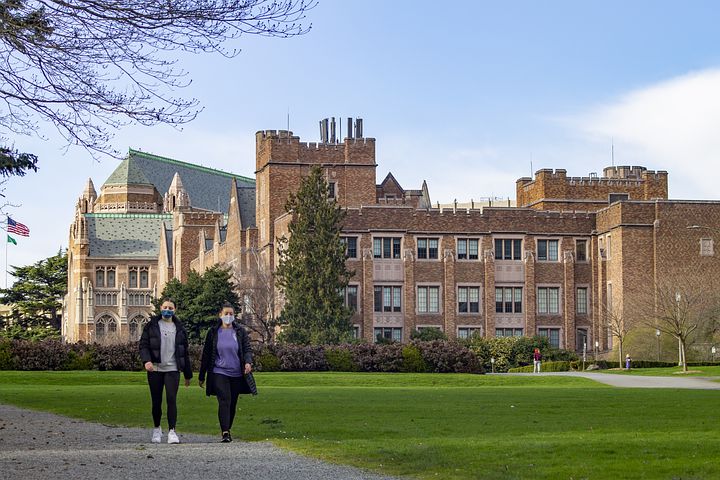The road to college
Amidst the ongoing debate about the constitutionality of requiring every eligible student to be vaccinated or agree to weekly COVID-19 testing (Pasadena Unified School District was one of the first districts whose board approved the mandate), all schools in the San Gabriel Valley are now open for in-person classes.
With the troubling surge in infection cases from the Delta variant, it should be a welcome relief for administrators, teachers, parents, and other vaccinated students. The move could help bring some normalcy to our children’s school life. These students would like to resume the kind of learning that virtual classes could not replicate.
Before I launch into the college guide, let me first touch on a topic that oftentimes causes family discord. School counselors tell their students to follow their passion when it comes to deciding what to pursue in college. That makes a lot of sense because people generally learn better when they’re studying something they are interested in. However, we also hear about research that finds STEM degrees are the most valuable, with the liberal arts the least valuable, to employers. Parents, anxious about their children’s earning potential, career future, and over-all financial stability, then discourage their children from taking liberal arts in college and push their children into the STEM field.
Employers, on the other hand, emphasize that they’re looking for applicants with excellent communication skills even when the job isn’t STEM-related. The conflicting information is enough to make anyone’s head spin. The one thing researchers and career advisors agree on is that earning a college degree will pay off in the long run. So whether your children are looking to get an engineering degree or are more interested in the humanities, the important thing is for you to support your children’s choice and help them be ready for college.
And that brings us to the College Guide. School administrators and counselors preach to their students that the college application process doesn’t start until the spring of their junior year and, therefore, they should just have fun and enjoy high school. While I agree that they won’t be applying until their senior year, the admissions process really begins on the first day of ninth grade. The components of their application is a compilation of their activities and accomplishments during their four years in high school. Hence, I advocate that your children start planning early on. Doing so makes a world of difference in their college search outcome.

FRESHMAN
Instill in your children good time management and organizational skills early on. High school is so much busier than what they’ve been through yet. These skills will help them have a happy, productive, and successful four-year experience.
If your children didn’t develop good study habits in lower and middle school, they need to buckle up and be serious about academics. Encourage them to immerse themselves in the culture of their high school and get involved in various extra-curricular activities that support their interests, and which they can carry on into the next three years.
Your children should find the time to meet with their school’s counselor to map out a four-year curriculum that meets all the requirements for graduating and going into college. Most colleges or universities require: four years of English; four years of mathematics; four years of science with advanced work in at least one of the three disciplines — biology, chemistry, physics; four years of a world language; three years of history, including American and European.
They should take the most challenging courses they can handle. If their high school offers Advanced Placement (AP) subjects in ninth grade and your children decide to take the course, they have to be ready to take the exams after they complete it. Colleges usually only recognize 4s and 5s to show competency. Highly selective institutions also expect As on AP courses on students’ transcripts.
I cannot emphasize enough that your children’s GPA is the single, most important component of their transcript. With several universities, like the UC and Cal State systems, dropping the SAT, students’ grades could very well be the determining factor for college-readiness.
SOPHOMORE
By this time, your children should be fully transitioned into high school. They should be picking up where they left off — taking AP courses, working on extra-curricular activities they identified in their freshman year, etc.
Practice exams for standardized tests are given in your children’s sophomore year so make sure they are registered for the PSAT (capacity is limited because of COVID-19 concerns so check to ascertain testing dates and that sites are open). Taking these tests will help them identify their weaknesses and study for them. Several companies and organizations offer test preparation courses (ACT: www.act.org; PSAT: www.collegeboard.com; Educational Testing Service: www.ets.org; Kaplan: www.kaplan.com; National Association for College Admission Counseling: www.nacacnet.org; The Princeton Review: www.princetonreview.com).
It may seem too early to do this, but your children can start looking at colleges that offer courses in their fields of interest. Or they can begin considering all possible options, if they haven’t determined what they are thinking of taking in college.
JUNIOR
This is a very hectic, even stressful, time in your children’s high school life. It is also the last complete year that college admissions officers will see your students’ grades and accomplishments. It is a critical year for them; they need to put the effort to show admission officers that they are capable of doing the work and are qualified for admission to the school to which they will be applying. If your children are thinking of applying to universities through early action/decision, their junior year grades and work will be all the more significant.
Aside from the rigors of school and extra-curricular activities, there are standardized tests to take. Your children should be taking the Preliminary SAT/National Merit Scholarship Qualifying Test (PSAT/NMSQT) early next month. I would like to remind parents not to put extra pressure on their children as they get ready for the standardize exams — they are stressed enough as it is, and a higher-than-average SAT score does not guarantee admission to their dream university.
Normally, colleges and universities would be holding College Fairs on various high school campuses around this time. Your children’s school should update you if either in-person or virtual fairs will be held.

SENIOR
It is going to be a marathon for your children! If your children are applying for early action/decision, they should have taken all the standardized exams required by the university during their summer after junior year.
Make it a point to attend your children’s ‘Back to School Night’ – counselors will probably be giving parents information about the college applications that will be starting in earnest.
The organizational skills that I have been talking about since your children entered ninth grade will be put to the test during their senior year. Encourage your children to create a calendar with standardized testing dates, counselor meeting schedules, and application deadlines.
Your children should have a binder with separate sections for each college or university and a log of what needs to be accomplished for each, like: required standardized tests (SAT or ACT, SAT II grades; AP test scores, etc.); writing supplement; how many letters of recommendation they require; application fee; application deadlines..
Ideally, you and your children have visited the colleges (even if you did it virtually) they are thinking of applying to. One of the first things they have to do is finalize the list of colleges and universities to which they will send applications. Eight was the norm when my daughter was applying, but students now are sending in 12 or more applications. This new normal, though, has only added to the competitiveness of the process. I would suggest limiting it to12 because applying to more schools doesn’t make a university with a 4% admission rate a more reachable goal.
They should be ready to write their personal statement. If teacher recommendations are being sent to the schools instead of emailed, your children should also have provided stamped envelopes to the teachers.
If you are applying for financial aid, be aware that the Free Application for Federal Student Aid FAFSA submission date starts on October 1st to align with the college admissions schedule.
Research all scholarships available. Some online sites include: CollegeXpress; Fastweb; and Scholarships.com. Many schools use Naviance, which also provides students information about scholarships and assistance on how to apply.
It goes without saying that as busy as your children are when they go through the college application process, they should also get the best grades they are capable of. The colleges to which they are applying will require their first quarter grades if they’re looking to gain admission through early action or early decision.
One factor that makes the college admissions process really stressful for parents is the feeling of not knowing what’s happening. School counselors generally only have time to meet exclusively with students, so parents feel shut out. However, there are books you can read to help demystify this process. A book I would recommend is called “Getting In! the Zinch Guide to College Admissions and Financial Aid in the Digital Age” by Steve Cohen, Anne Dwane, Paulo de Oliveira, and Michael Muska.
The professional guidance and insight the authors of this book provide will give you the ability to help your children navigate this complicated process. Use the book constructively; do not make it another source of stress for yourself and your children.
A book by Frank Bruni called “Where You Go Is Not Who You’ll Be” is a great read for both parents and students who are in the middle of college applications. It will help keep your expectations realistic and relieve your children of the pressure to get into the most selective universities.







